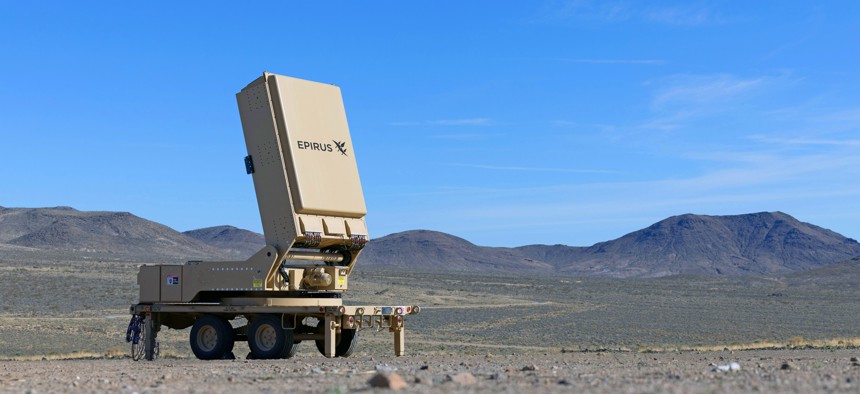
The Epirus Leonidas counterdrone microwave weapon. Courtesy of Epirus
Is This New Microwave Weapon the Answer to Iranian Drones?
Army awards $66 million to develop weapon that can fry drone bits in the air.
Russia’s frequent drone attacks on Ukraine mirror a challenge that is growing for the U.S. military in almost every operational environment: How do you defeat drone swarms without wasting expensive surface-to-air missiles? The U.S. Army is working with a California company to develop microwave weapons that can fry airborne electronics
On Monday, counter-drone company Epirus announced that they had won a $66 million prototyping contract from the Army’s Rapid Capabilities and Critical Technologies Office for its experimental Leonidas counterdrone microwave weapon. The Army will “transition Leonidas into a future program of record after successful demonstration of the prototypes,” according to the company’s statement.
Andy Lowery, the company’s chief product officer and chief operating officer, described the Leonidas as a directed electromagnetic pulse or EMP weapon. Like a laser, which the military has been using for drone defense for years, the Leonidas is a directed-energy weapon; unlike a laser, it can focus on an entire swath of sky. The Leonidas also improves on jamming-type defenses because it works even on drones that have no link back to their operators.
About a year ago, Lowery said, the company began to test the weapon against large group 3 drones. “What we found was is that we are very effective against all the wires that go down the length of the wings and control the ailerons and the rudders,” he said.
He said that Epirus has been experimenting with gallium nitride chips, which have been shown to amplify power in radar and directed energy applications. Previous microwave weapons have used vacuum tubes, which he said pour their energy “into a huge parabolic dish in a very, very skinny beam and zap up like a high-energy laser in that way.” The use of gallium nitride as well as new uses of machine learning for frequency identification allows Leonidas to vary its energy output, depending on the sort of drone it needs to target, he said.
“So what that means is we're changing frequency, changing pulses, changing various aspects of that EMP in order to turn it to the adversary. And that's something that just differentiates us.”
The Shahed 136s are more than a menace for Ukraine. They’ve also been used against tankers in the Middle East. While U.S. military and defense officials highlight Ukraine’s ongoing air defense needs, their answer so far has been expensive surface-to-air missiles like the Patriots and National Advanced Surface-to-Air Missile System, or NASAMS and Patriots, as well as VAMPIRE laser-guided rockets.


